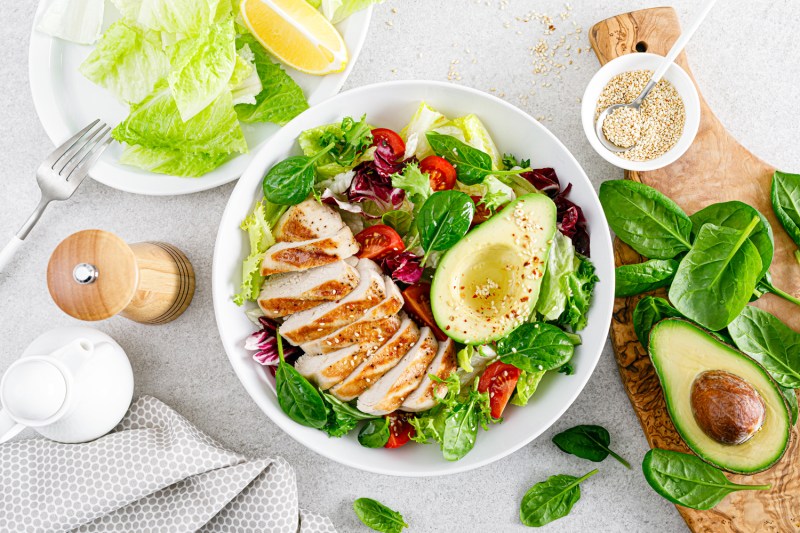Having a six-pack is attractive, and this muscular feature is the epitome of fitness and health to many people, and they’re not wrong to feel that way. Defined abdominal muscles complement any physique and may also indicate that one exercises regularly and eats healthily.
Nonetheless, getting a six-pack is a different ballgame. While many people like and want a six-pack, most don’t know how to get abs. There’s some nuance to sporting well-defined abs, but it’ll be much easier if you follow the right exercise and dieting tips. Keep reading to learn everything you need to know.
Do abs mean you’re healthy?

Visible abs are a sign of low body fat and muscle definition, which often result from regular exercise and a balanced diet. However, visible abs alone do not necessarily indicate overall health. Various other factors are marks of good health, including cardiovascular fitness, body composition, strength and endurance, mental health, and being consistent with a nutritious diet.
Also, on the other side of things, having abs could even mean that you’re unhealthy. Some people who have abs also have severely low body fat levels, which may not be optimal for health and body functioning (less than 5% for men and less than 15% for women).
So, abs are usually a sign of good health until certain body fat levels are achieved. In trying to get abs, it’s important to take things slowly and not sacrifice health for the simple goal of aesthetics.
Why is it hard to get abs?

Some areas of the body store more fat than others. The abdominal area is one part of the body that stores a lot of fat, especially as people age. This means that to see the underlying abdominal muscles, you may have to diet more and train your abs more specifically.
For example, it takes much longer to see muscle definition in your shoulders than in your abdominals. The reason for this is that the abdominal area stores more fat than the shoulders, not to mention other body parts like legs and arms.
Best exercises for strengthening your abdominals
Planks

Instructions:
- Start in a forearm plank position with your elbows directly under your shoulders and your body in a straight line from head to heels.
- Engage your core, squeeze your glutes, and hold the position.
- Keep your body straight and avoid sagging or arching your back as you maintain the position for a predetermined amount of time.
Bicycle crunches

Instructions:
- Lie on your back with your hands behind your head and your legs lifted and bent at a 90-degree angle.
- Bring your right elbow toward your left knee while straightening your right leg.
- Switch sides, bringing your left elbow toward your right knee while straightening your left leg.
- Continue alternating sides in a pedaling motion.
Lying leg lifts

Instructions:
- Lie on your back with your legs straight and your hands by your sides or under your glutes for support.
- Keeping your legs straight, lift them toward the ceiling until they form a 90-degree angle with your torso.
- Slowly lower your legs back down without letting them touch the ground before repeating.
Russian twists

Instructions:
- Sit on the ground with your knees bent and your feet flat on the floor.
- Lean back slightly and lift your feet off the ground, balancing on your sit bones. Hold a weight or a medicine ball with both hands in front of your chest.
- Twist your torso to the right, bringing the weight beside your hip.
- Twist back to the left, bringing the weight beside your left hip.
- Continue alternating sides.
Hanging leg raises

Instructions:
- Hang from a pull-up bar with your arms straight and your legs together.
- Keeping your legs straight or slightly bent at the knee, lift them toward your chest.
- Slowly lower your legs back down to the starting position.
Eating tips to get your abs to show

Getting your abs to show involves two broad tips: eating a healthy diet and exercising. Let’s break down these general recommendations into simple actions that will make showing your abs much easier.
Eat in a calorie deficit
The best ab workouts won’t give you a six-pack if your body fat percentage is too high. To lose fat, ensure you’re consuming fewer calories than you burn. Use a calorie calculator to determine your daily caloric needs and aim for a moderate deficit. Removing 500 calories from your maintenance calories is a good starting point.
Increase your protein intake
Protein helps build and preserve muscle mass, which is essential when you’re losing weight. Include lean protein sources like chicken, turkey, fish, eggs, legumes, and low-fat dairy in your meals. The International Sports Sciences Association says that eating 2 to 3 grams of protein per kilogram of body weight is likely healthy for very active people looking to gain muscle.
Eat whole foods
Focus on whole, unprocessed foods like vegetables, fruits, whole grains, lean proteins, and healthy fats. These are nutrient-dense foods and can help you feel fuller for longer.
Stay hydrated
Drink plenty of water throughout the day. Staying hydrated can help control hunger and improve your overall metabolic function.
Limit refined carbs and sugars
Reduce your intake of refined carbohydrates and sugary foods and drinks. These can spike insulin levels and contribute to fat storage. Opt for complex carbs like quinoa, brown rice, oats, and sweet potatoes instead.
Eat healthy fats
Include foods like avocados, nuts, seeds, olive oil, and fatty fish in your diet. These fats are essential for overall health and can help you feel satiated.
How long does it take to get abs?

How long it takes to get abs typically depends on your starting point. Factors such as your current body fat levels, exercise routine, and consistency play a part. Do you currently engage in resistance training multiple times a week and want to get more defined abs? If you start doing ab-focused exercises now, you could see some ab development in a matter of weeks.
Remember, however, that your body fat percentage is still important. For men, abs typically start to appear around 10-15% body fat. This number may be higher for women, who may see their abs at 16-20%.
What is the fastest way to get abs?
There’s no magic for getting abs quickly, and even though many ab workouts promise fast results, these results are still dependent on many factors. However, resistance training, cardiovascular exercise, and eating in a calorie deficit that includes plenty of protein sources would increase your chances of getting abs sooner rather than later.
Again, it’s important to train your abs for optimal ab development. If you’re not lean enough to see your abs, focus on overall resistance training and cardio. On the other hand, if your body fat percentage is low, training your abs directly would speed up your six-pack journey.




